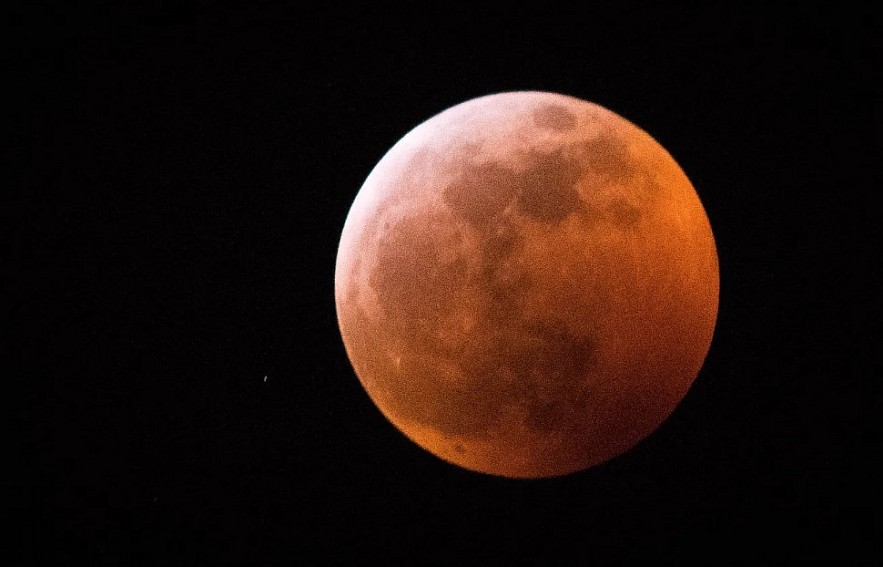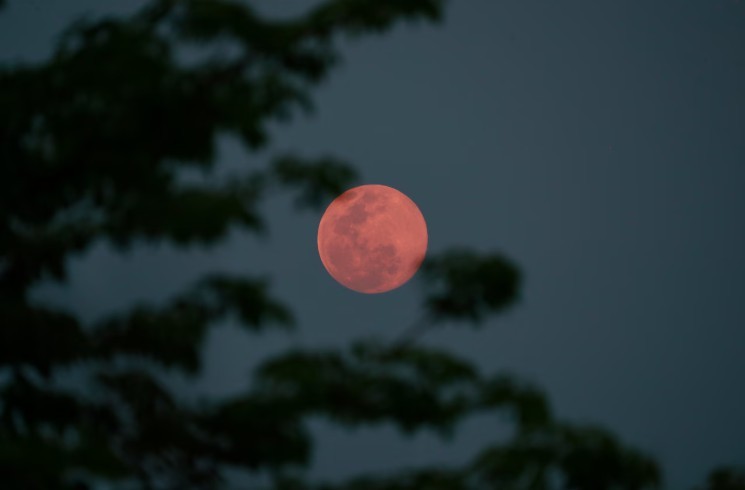The First Full Moon of 2025 - Wolf Moon: Time, Date, and Best Places to View
The first Full Moon of 2025 is a celestial event that marks the beginning of the year with brilliance and wonder. As a time when the Moon is fully illuminated, it offers breathtaking views for observers around the globe.
Learn more: Full Moon and New Moon Horoscopes for 2025
 |
| Wolf Moon - The full moon in January 2025 |
When Is the First Full Moon of 2025?
The first Full Moon of 2025 will occur on Friday, January 10, reaching its peak illumination at approximately 4:57 PM UTC. This time corresponds to:
- 11:57 AM EST (Eastern Time)
- 10:57 AM CST (Central Time)
- 9:57 AM MST (Mountain Time)
- 8:57 AM PST (Pacific Time)
While the Moon will reach its fullest point during the afternoon in the United States, it will still provide an exceptional viewing experience on the evening of January 9 and into the night of January 10, depending on weather and visibility conditions.
The Best Time to Observe the January Full Moon in the U.S.
Although the Full Moon reaches its peak during the day in the United States, the best times to view it are after sunset when it is fully visible in the night sky. Here's a guide to optimal viewing times across different time zones:
Eastern Time (EST): On January 9, the Moon rises around 4:30 PM and remains visible all night, providing excellent viewing conditions as it ascends higher in the sky.
Central Time (CST): The Moon rises around 4:50 PM on January 9, with prime viewing available during the early evening hours.
Mountain Time (MST): The Moon rises approximately at 5:10 PM on January 9, offering a clear view for skywatchers.
Pacific Time (PST): In the western U.S., the Moon rises around 5:30 PM on January 9, creating ideal opportunities for observation shortly after sunset.
For all time zones, the night of January 9 offers the most enchanting views as the Moon lights up the night sky in its full glory.
The Best Places to View the First Full Moon of 2025 in the U.S.
The beauty of the Full Moon can be enjoyed from almost anywhere with a clear view of the night sky. However, some locations in the United States provide an enhanced experience due to minimal light pollution, open horizons, and breathtaking landscapes. Here are some of the best places to witness the Full Moon:
1. National Parks
National parks offer unparalleled views of the Moon, free from urban light pollution. Some top destinations include:
- Grand Canyon National Park, Arizona: The vast canyon landscape offers a dramatic and awe-inspiring backdrop for moonlit viewing.
- Great Basin National Park, Nevada: Known for its pristine dark skies, this park is a haven for stargazers and lunar enthusiasts.
- Acadia National Park, Maine: With views of the ocean and rocky coastlines, the Moon’s reflection on the water creates a mesmerizing scene.
2. Dark-Sky Reserves
Designated as some of the best places for celestial observation, these areas are perfect for viewing the Full Moon:
- Big Bend National Park, Texas: Located far from city lights, it provides a serene and immersive experience under the moonlit sky.
- Cherry Springs State Park, Pennsylvania: Renowned for its dark skies, this park is a favorite among astronomers and photographers.
- Death Valley National Park, California: Known for its expansive desert landscapes, the Moon shines brilliantly against the stark surroundings.
3. Coastal Locations
Viewing the Moon over the ocean or large bodies of water amplifies its beauty:
- Key West, Florida: The Moon rising over the Atlantic Ocean creates a stunning reflection on the water.
- Pacific Coast Highway, California: Anywhere along this iconic route offers breathtaking views of the Moon over the Pacific Ocean.
- Cape Cod, Massachusetts: Coastal views and quiet beaches make it an ideal spot for moonlit contemplation.
4. Mountain Peaks
Elevated locations offer clearer views of the Moon, free from obstructions:
- Rocky Mountain National Park, Colorado: The high altitude provides a perfect vantage point for observing the Moon against the snowy peaks.
- Mount Rainier, Washington: The Moon shining over the iconic mountain is a sight to behold.
- Blue Ridge Mountains, Virginia and North Carolina: These rolling peaks create a serene setting for Full Moon observation.
5. Urban Observation Decks
For those in cities, urban observation decks can provide stunning views of the Moon rising above cityscapes:
- Griffith Observatory, Los Angeles: This iconic spot combines urban convenience with excellent lunar views.
- Top of the Rock, New York City: Watch the Moon rise over Manhattan’s skyline for a unique perspective.
- Skydeck Chicago: See the Full Moon above the Windy City from this towering observation deck.
What Makes the First Full Moon of 2025 Special?
The first Full Moon of the year is often symbolic, marking a time of renewal and reflection. Known as the Wolf Moon in many traditions, it is steeped in cultural and historical significance. Indigenous peoples and early European settlers named it after the howling of wolves, which were believed to be more active during the cold winter months.
This lunar phase also holds astrological meaning, as it occurs in the sign of Cancer in 2025. Cancer is associated with emotions, home, and family, making it an ideal time to focus on personal growth and nurturing relationships.
Tips for Viewing and Photographing the January Full Moon
To make the most of your Full Moon experience, consider the following tips:
Viewing
- Check the Weather: Ensure clear skies by checking the local forecast for January 9-10.
- Find a Clear Horizon: Look for locations with minimal obstructions to enjoy an unobstructed view of the Moonrise.
- Dress Warmly: In many parts of the U.S., January nights can be chilly, so layer up for comfort.
Photography
- Use a Tripod: Stability is essential for capturing sharp, detailed images of the Moon.
- Adjust Camera Settings: Set a low ISO, fast shutter speed, and appropriate aperture to avoid overexposure.
- Incorporate Landscapes: Frame the Moon with natural or man-made elements to create visually stunning compositions.
Conclusion
The first Full Moon of 2025, occurring on January 10, is an event that promises to inspire awe and wonder. Whether viewed from the comfort of your backyard or under the pristine skies of a national park, it is a moment to reconnect with the natural world and marvel at the beauty of the cosmos. Mark your calendar, find a prime viewing spot, and prepare to welcome the year with the luminous glow of the Wolf Moon lighting up the night.
 What is Snowmoon: Name Origin, Date, Time and Interesting Myths What is Snowmoon: Name Origin, Date, Time and Interesting Myths It is predicted that there would be a super full moon called "Snowmoon" on Saturday, February 27 2021. Read the article below for more information ... |
 February Full Moon: 3 Zodiac Signs are affected most, Date&Time February Full Moon: 3 Zodiac Signs are affected most, Date&Time What impacts will the last full moon of the winter season have on zodiac signs? Different zodiac signs will be affectedly under the full moon. ... |
 Pink Supermoon: What is it, When & How to See? Pink Supermoon: What is it, When & How to See? Our pink supermoon will light up this April. Check out our guide below to make sure you are not gonna miss out on spotting it! |
 Born on Full Moon: Life Horoscope and Personality Traits Born on Full Moon: Life Horoscope and Personality Traits Full Moon Birthday: Find out your personality traits, the best horoscope - astrological prediction for love, money, career and health. |


























